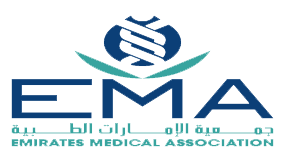Introduction to Tummy Tuck and Its Purpose
Understanding Abdominoplasty
Abdominoplasty, commonly known as a tummy tuck, is a surgical procedure aimed at enhancing the appearance of the abdomen. It involves the removal of excess skin and fat and the tightening of abdominal muscles to create a smoother and firmer abdominal profile.
Dubai Belly Reduction is a way to help people in dubai lose extra belly fat through special diets and exercises.
- What is Abdominoplasty?
- A surgical procedure to improve abdominal contours.
- Removal of excess skin and fat.
- Tightening of the abdominal muscles.
The Aesthetic Goals of a Tummy Tuck
The primary aesthetic goal of a tummy tuck is to achieve a flatter, well-toned abdomen that might not be possible through diet and exercise alone. It’s particularly helpful for those who have undergone significant weight changes or women post-pregnancy.
- Aesthetic Improvements:
- Flatter abdomen.
- Toned appearance.
- Improved body contour.
How Do You Know If You Need a Tummy Tuck?
Assessing Your Body and Abdominal Concerns
To determine if you need a tummy tuck, assess your abdominal area for excess skin, stubborn fat deposits, and muscle laxity. If these issues persist despite a healthy lifestyle, a tummy tuck might be the solution.
- Body Assessment:
- Check for excess skin.
- Identify stubborn fat deposits.
- Evaluate muscle laxity.
Stable Weight and Tummy Tuck Considerations
Before considering a tummy tuck, it’s crucial to have a stable weight. Fluctuations in weight can affect the surgical outcome and may lead to suboptimal results.
Book A Consultation With Dr Shehzadi Tasneem
Top-rated Plastic Surgeon For Tummy Tuck in Dubai
Installment Plan Available
- Weight Stability:
- Maintain a stable weight pre-surgery.
- Avoid significant weight fluctuations.
The Role of Skin Elasticity and Excess Fat
Skin elasticity and the amount of excess fat are key factors in determining the need for a tummy tuck. Poor skin elasticity and significant excess fat might indicate the procedure’s necessity.
- Skin and Fat Evaluation:
- Assess skin elasticity.
- Quantify excess fat.
Differentiating Between Tummy Tuck Procedures 
Traditional Tuck vs. Mini-Tuck
A traditional tuck is suitable for those with a significant amount of excess skin and fat, while a mini-tuck is less invasive and targets the area below the navel.
- Procedure Types:
- Traditional Tuck: Extensive correction.
- Mini-Tuck: Less invasive, focused correction.
Extended Tuck and Its Unique Aspects
An extended tuck addresses excess skin and fat around the sides and lower back, suitable for individuals with more extensive concerns.
- Extended Tuck Characteristics:
- Addresses sides and lower back.
- Suitable for extensive excess skin and fat.
Panniculectomy vs. Tummy Tuck
Panniculectomy is a surgical procedure that removes only the overhanging apron of skin, while a tummy tuck also tightens the abdominal muscles.
- Procedure Differences:
- Panniculectomy: Removes skin apron.
- Tummy Tuck: Tightens muscles and removes skin.
Medical and Aesthetic Indications for a Tummy Tuck
Reduction of Stress Urinary Incontinence (SUI)
A tummy tuck may help reduce symptoms of SUI, a bladder control problem, by providing support to the pelvic floor after the abdominal muscles are tightened.
- SUI Improvement:
- Potential reduction in SUI symptoms.
- Support to the pelvic floor.
Alleviating Back Pain Through Abdominoplasty
Tightening the abdominal muscles during a tummy tuck can provide better support for the spine, potentially alleviating back pain.
- Back Pain Relief:
- Improved abdominal muscle support.
- Potential reduction in back pain.
Addressing Post-Pregnancy Changes
Post-pregnancy, women may experience diastasis recti, where the abdominal muscles separate. A tummy tuck can repair this separation and restore the abdomen’s appearance.
- Post-Pregnancy Repair:
- Correction of diastasis recti.
- Restoration of abdominal contours.
Pre-Surgical Evaluation with Dr. Shehzadi Tasneem Sultan 
Determining Candidacy for a Tummy Tuck
Dr. Shehzadi Tasneem Sultan will evaluate your overall health, medical history, and aesthetic goals to determine if you’re a good candidate for a tummy tuck.
- Candidacy Factors:
- Overall health assessment.
- Review of medical history.
- Discussion of aesthetic goals.
Your Current Medical Status and Abdominoplasty
Your current medical status, including any pre-existing conditions or medications, will be considered to ensure the safety and success of the procedure.
- Medical Status Consideration:
- Evaluation of pre-existing conditions.
- Medication review.
The Tummy Tuck Procedure Explained
What Happens During Surgery
During a tummy tuck, an incision is made, excess skin and fat are removed, and the abdominal muscles are tightened. The remaining skin is then repositioned to create a more toned look.
- Surgical Steps:
- Incision creation.
- Removal of skin and fat.
- Muscle tightening and skin repositioning.
Immediate Post-Operative Expectations
After surgery, you can expect some swelling, discomfort, and the presence of drainage tubes to remove excess fluid. These are normal and temporary post-operative occurrences.
- Post-Operative Experiences:
- Swelling and discomfort.
- Drainage tubes.
Recovery and Post-Tummy Tuck Care
Your Recovery at Home
Recovery at home involves rest, avoiding strenuous activities, and following your surgeon’s instructions to ensure proper healing.
- Home Recovery Tips:
- Adequate rest.
- Avoidance of strenuous activities.
- Adherence to surgeon’s instructions.
Activity and Diet Post-Procedure
Gradually resuming activities and maintaining a balanced diet are essential for a smooth recovery and optimal results.
- Post-Procedure Lifestyle:
- Gradual activity resumption.
- Balanced diet.
Incision Care and Medication Management
Proper incision care is crucial to prevent infection, and managing medications as prescribed will aid in pain management and healing.
- Care and Management:
- Incision care to prevent infection.
- Adherence to medication schedule..
When to Call for Help During Recovery
If you experience unusual symptoms such as excessive pain, signs of infection, or breathing difficulties, it’s crucial to contact your surgeon immediately.
- Warning Signs:
- Excessive pain.
- Signs of infection.
- Breathing difficulties.
Long-Term Outlook and Results of a Tummy Tuck
How Long Will a Tummy Tuck Last?
The results of a tummy tuck can be long-lasting, especially when accompanied by a stable weight and a healthy lifestyle.
- Result Longevity:
- Long-lasting with stable weight.
- Enhanced by a healthy lifestyle.
The Permanent Scar and Its Management
A tummy tuck will leave a permanent scar, which will fade over time. Proper scar care can help minimize its appearance.
- Scar Management:
- Scar fading over time.
- Proper scar care techniques.
Lifestyle Considerations and Tummy Tuck Longevity
Maintaining Results Through Lifestyle Choices
To maintain the results of a tummy tuck, it’s essential to adhere to a healthy diet, regular exercise, and avoid significant weight fluctuations.
- Lifestyle Maintenance:
- Healthy diet.
- Regular exercise.
- Weight stability.
The Importance of a Stable Weight Post-Tummy Tuck
Keeping a stable weight post-tummy tuck is crucial to preserving the surgical results and preventing the recurrence of excess skin and fat.
- Weight Stability Post-Surgery:
- Importance of maintaining a stable weight.
- Prevention of excess skin and fat recurrence.
Alternatives to Tummy Tuck
Non-Surgical Options and Their Efficacy
Non-surgical options like cryolipolysis or laser therapy can reduce fat but may not address excess skin or muscle laxity as effectively as a tummy tuck.
Lifestyle Changes as an Alternative Approach
Diet and exercise can improve body contours but may not achieve the same results as a tummy tuck for those with significant excess skin or weakened abdominal muscles.
Preparing for Your Consultation with Dr. Shehzadi Tasneem Sultan
What to Expect During the Consultation
During the consultation, Dr. Shehzadi Tasneem Sultan will discuss your goals, evaluate your abdomen, and explain the procedure, recovery, and potential risks.
Patient Information Form and Pre-Consultation Preparation
You’ll be asked to fill out a patient information form and may need to prepare by gathering medical records and a list of questions for the surgeon.
Achieving Your Aesthetic Goals with Dr. Shehzadi Tasneem Sultan
Tailoring the Procedure to Your Needs
Dr. Shehzadi Tasneem Sultan will tailor the tummy tuck procedure to your specific needs, ensuring that your aesthetic goals are met.
Post-Operative Support and Follow-Up Care
You will receive comprehensive post-operative support and follow-up care to monitor your recovery and ensure the best possible outcome.
Patient Education and Resources
Learning More About Abdominoplasty
Educating yourself about abdominoplasty is crucial to making an informed decision. Seek reliable sources and consult with experienced surgeons.
Where to Get Help and Support
For additional help and support, consider joining support groups, consulting with a therapist, or reaching out to others who have undergone the procedure.
Insurance Coverage and Financial Considerations
Tummy tucks are generally considered cosmetic procedures and are not covered by insurance. Discuss financial options with your surgeon’s office to plan accordingly.
Swelling usually starts to go down after a few days when your body begins to heal. When does Tummy Tuck swelling diminish? It often gets better with rest, ice, and keeping the injured area raised.
FAQs: How Do You Know If You Need a Tummy Tuck? Tummy tuck local anesthetic helps numb your belly area so you don’t feel pain during the surgery to make your tummy look flatter Abdominoplasty procedure stages The doctor marks the areas to be treated and makes cuts to remove extra skin and fat Then the remaining skin is pulled tight and the belly button is repositioned before closing the incisions
Abdominoplasty pain levels Tummy tuck safety is important to consider before getting the surgery Abdominoplasty long-term risks
Botched abdominoplasty appearance A botched abdominoplasty appearance can result in an uneven or lumpy stomach with visible scars and an unnatural-looking belly button shape
How to Identify the Need for a Tummy Tuck
If you have excess skin and fat around your abdomen that doesn’t improve with diet and exercise, you may be a candidate for a tummy tuck. Consult with a specialist like Dr. Shehzadi Tasneem Sultan for a personalized evaluation.
Recovery Timeline and Sleeping Positions Post-Tummy Tuck
Recovery can take several weeks, and it’s recommended to sleep on your back with your upper body slightly elevated to reduce swelling and discomfort.












